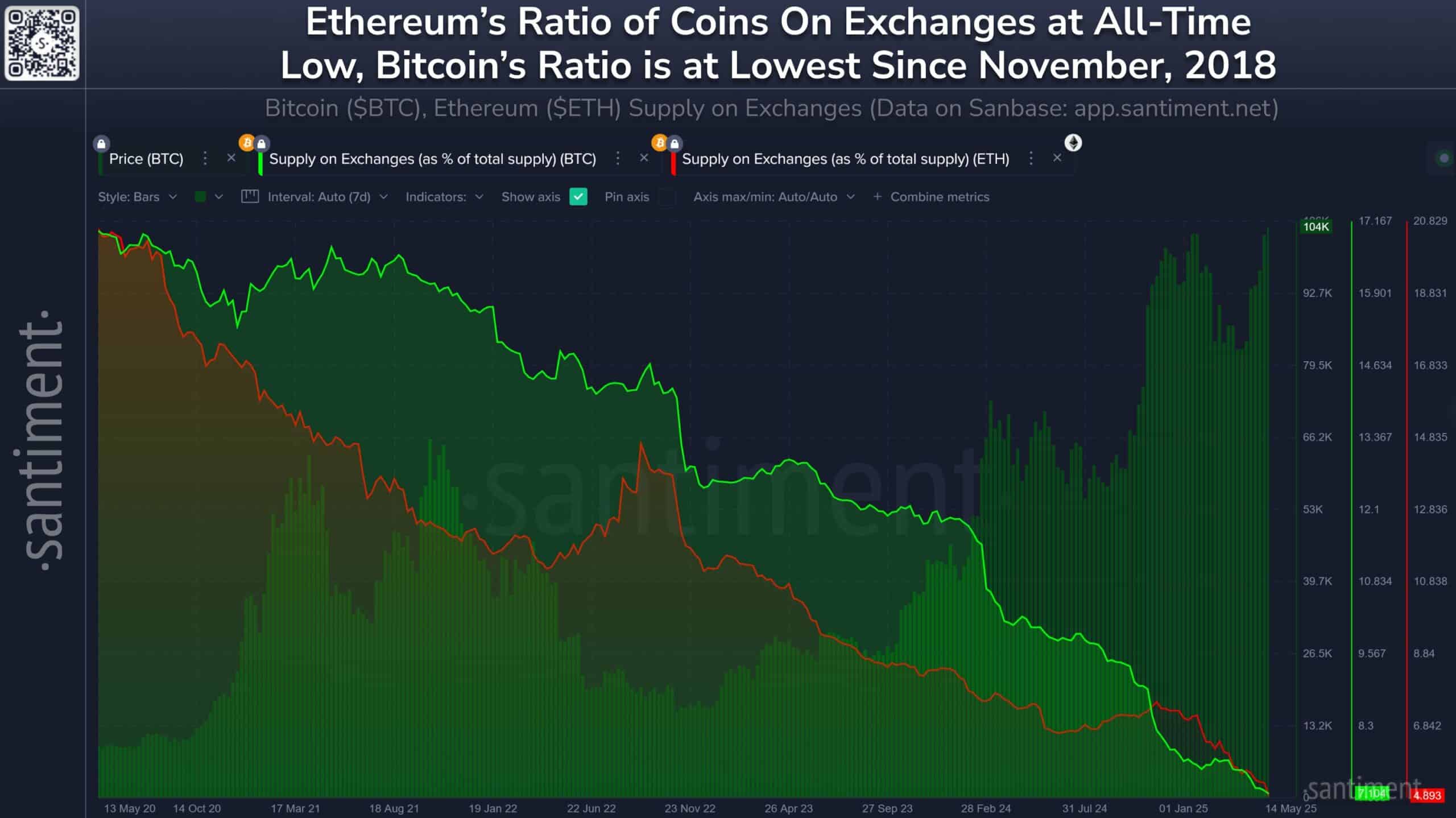[ad_1]
Bitcoin’s supply on exchanges has fallen to only 7.1% — its lowest degree since November 2018 — whereas Ethereum has dropped under 4.9% for the primary time in its 10+ 12 months historical past.
The tempo of outflows over the previous 5 years is placing: greater than 1.7 million BTC and 15.3 million ETH have been withdrawn from CEXes.
These figures point out a rising pattern towards self-custody and long-term holding, doubtlessly setting the stage for a provide squeeze if demand begins to speed up.
The provision shock debate
A provide shock sometimes happens when obtainable tokens on exchanges dwindle simply as demand surges, creating upward stress on costs. With BTC and ETH balances at multi-year lows, the stage appears set.
Traditionally, related developments have preceded main rallies, as shrinking float limits sell-side liquidity. However not everybody’s satisfied.
Some argue whales could merely be transferring funds to chilly storage for safety, not accumulation. Others level to a still-cautious retail crowd and a potential cooling buzz post-ETFs.
If sentiment shifts, sidelined capital might re-enter exchanges, rapidly reversing the pattern.
Bitcoin: From fringe to mainstream
Roughly 50 million People now personal Bitcoin — surpassing gold possession by a large margin, per River and The Nakamoto Mission. As BTC vanishes from exchanges, this shift is big so far as priorities go.
Bitcoin is not a fringe asset however a rising reserve different. The sharp drop in change provide could also be tied much less to hypothesis and extra to a long-term redefinition of worth within the digital age.
[ad_2]
Source link




